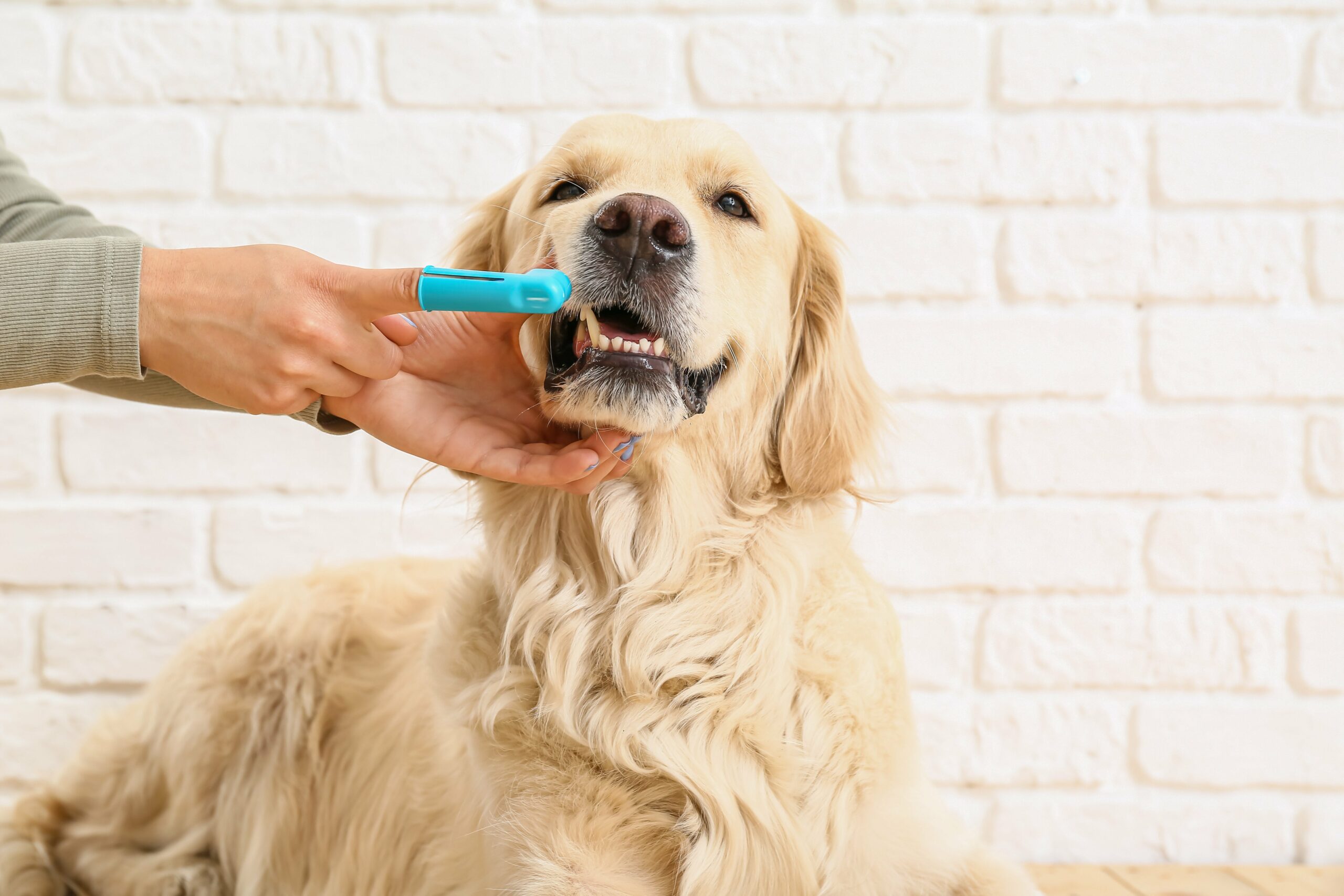As pet parents, we often go to great lengths to ensure the health and happiness of our furry companions. One often overlooked aspect of dog care is dental hygiene. Just like humans, dogs can suffer from dental issues that can affect their overall well-being. Regularly brushing your dog’s teeth not only keeps their breath fresh but also promotes good oral health and prevents potential dental problems down the line.
Why Dental Care Matters
Maintaining your dog’s dental health goes beyond preventing bad breath. Just like humans, dogs can develop plaque and tartar buildup, leading to various dental issues such as gum disease, tooth decay, and even tooth loss. These issues can cause pain, discomfort, and potential systemic health problems. By incorporating regular tooth brushing into your dog’s routine, you’re taking a proactive step to ensure their overall health and happiness.
Choosing the Right Toothbrush and Toothpaste
Toothbrush: Selecting the right toothbrush is crucial. Opt for a toothbrush specifically designed for dogs, with soft bristles to prevent gum irritation. Finger brushes can also be a great choice, giving you better control while brushing.
Toothpaste: Never use human toothpaste on your dog, as it can contain ingredients harmful to them. Instead, choose a dog-friendly toothpaste with flavors like poultry or peanut butter that will entice your dog to enjoy brushing.
Making Brushing a Positive Experience
Start slowly, introduce the toothbrush and toothpaste gradually. Let your dog sniff and lick the toothpaste to get used to the taste and smell. Associate toothbrushing with positive experiences. Offer treats and praise before, during, and after brushing to create a pleasant connection. Before using the toothbrush, gently massage your dog’s gums with your finger. This helps your dog become accustomed to having their mouth touched.
Step-by-Step Guide to Proper Brushing
- Get Prepared: Find a quiet and comfortable space for brushing. Have the toothbrush and toothpaste within reach. Introduce the Toothbrush: Show your dog the toothbrush, allowing them to sniff and investigate. Apply a small amount of dog-friendly toothpaste to the bristles.
- Positioning: Gently lift your dog’s lip to expose their teeth. Start with a few front teeth and gradually work your way to the back. Focus on the outer surfaces where plaque tends to accumulate.
- Brushing Motion: Hold the toothbrush at a 45-degree angle and use gentle circular motions. Pay extra attention to the gum line, where bacteria thrive.
- Stay Calm: If your dog becomes anxious or uncomfortable, stop and give them a break. This is a learning process, and patience is key.
- Reward and Praise: After brushing, offer a treat and lots of verbal praise. This positive reinforcement helps your dog associate brushing with positive experiences.
Cultivating a Healthy Habit
Ideally, aim to brush your dog’s teeth 2-3 times a week. Consistency is key to maintaining their dental health. If you’re new to brushing, start slow and gradually increase the frequency as your dog becomes more comfortable. In addition to regular brushing, you have the option to incorporate a dental supplement to enhance your dog’s oral health.
In addition to regular brushing, you can complement your dog’s oral health routine with a dental supplement. ProDen PlaqueOff® contains a natural and unique kelp ingredient called A.N ProDen™, which has demonstrated its efficacy in clinical trials by helping to control and reduce plaque and tartar buildup. Additionally, when used as directed, it can contribute to improving bad breath. The supplement is available in convenient options such as tasty bites, chews, and a powder that can be effortlessly sprinkled over your dog’s daily meals.
Professional Dental Care
Regular brushing is essential, but it’s also important to schedule regular dental check-ups with your veterinarian. They can identify any potential issues and perform professional cleanings if necessary.
In conclusion, incorporating regular tooth brushing into your dog’s routine is a simple yet impactful way to ensure their overall health and happiness. By choosing the right tools, creating positive associations, and following a step-by-step process, you can make toothbrushing an enjoyable activity for both you and your dog.
Disclaimer: This article is for informational purposes only and should not be considered veterinary advice. Always consult your veterinarian for specific recommendations regarding your dog’s dental care.
